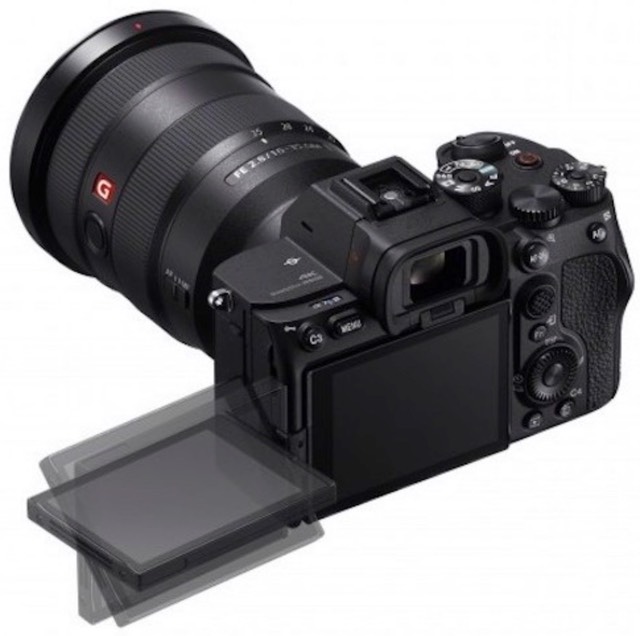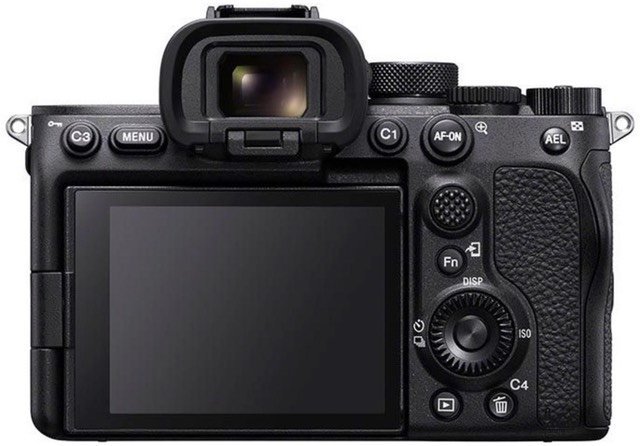Today Sony announced the long-rumored and long-awaited (by videographers) A7S Mark III camera. There's a ton of technical mumbo-jumbo in the announcement, as this is a camera that is speciality in nature, and it digs deep into various specific issues that are important to video users.

Probably the big news on that front is that the 4K output on the A7S Mark III can be 120P internally, 120P externally (uncompressed), all with 10-bit 4:2:2 color. If you're running with an Atomos external recorder, the camera go output 16-bit 4K that's recorded as ProRes Raw. Any way you record, that's a ton of data, and it puts the A7S Mark III at the top of the ILC video heap in terms of capability.
4K video on the A7S Mark III is performed as a pixel-level readout. No oversampling, no line skipping. That does mean there's Bayer interpolation going on, but the result should still be a very clean, detailed, and smooth looking frame. There's a very small crop to the UHD 4K when IS is active (1.1x).
Meanwhile, 1080P is downsampled from the 4K, and goes to 240 fps.
The image sensor in the A7S Mark III is a new one, and BSI. It doesn't feature dual gain (though video has a higher base than stills). The new sensor sits on the IS platform Sony has been using, which is good for up to 5.5 stops CIPA shake reduction.
Sony made a number of claims about the passive cooling system in the new camera, which will obviously get tested quickly. The Canon R5 is turning out to be more of a "sometimes use" video camera due to heat limits, so Sony very well may have some clear bragging rights here if the A7S Mark III is able to operate continuously, even in hot environs.
One thing I've long asked for has finally appeared in an ILC with the A7S Mark III—technically it first appeared in the FX9, but that's not a still camera—and that's that the gyroscopic sensor data is published into the video capture data. Why is this interesting? Because software then knows what and how much the camera was moving (and what the image stabilization system may have tried to correct).
It's sort of like JPEG versus raw: with in-camera IS you get what the camera decided (JPEG); with the availability of the extra data in post processing, you may decide to do something different (raw). That's clearly useful for video—you could crop the frame and apply additional, intelligent post stabilization based on the stream—but I think it's overdue for still cameras, too. We already have software vendors using AI trying to guess what the camera motion was; a basic data set would better inform that AI. Unfortunately, it doesn't appear this data is available in still photography.

As a still camera—you knew I'd get to that eventually, right?—the A7S Mark III has a couple of interesting aspects to it. First, ARW (raw files) can be 16-bit. We'll have to see how much usable data that reveals, but it does represent a first-in-class.
The EVF is now 9.44m dot, the highest available in a mirrorless camera, and it features a 0.9x magnification. I'm not sure how much that does for still photographic use, but it does step one size up from what we've had in other cameras. Technically, that would help most for precise manual focus operation.
The autofocus system is basically the same as in the A7R Mark IV, with 759 phase detect points and all the (now) usual Sony autofocus modes and settings, including animal eye recognition.
Out back is an articulating 1.44m dot LCD. The articulating feature is apparently driving some Sony fans mad (they want tilting only), but I believe Sony made the right choice for a camera that will be used shooting video much of the time. Basically, you have to go "all in" on design for your target customer if you're going to try to take the same basic body and sell it four different ways. If the rear LCD wasn't articulating on the A7S Mark III, you would have heard howls from the vlogger/videographer crowd that the camera is targeted for.
And on that LCD is a new menu system, with full touch support (about time). Amen to both. Because I move between systems a lot, it's just darned difficult to deal with an unorganized menu system and having to navigate that mess using key presses. We need those same abilities on the other Sony full frame cameras stat. That said, Sony still needs to work on its naming and abbreviation use ("Prior" is not an abbreviation for priority, and there was room to use the whole word; the new menus are permeated with similar examples).
For storing data, the A7S Mark III uses a new dual/dual card slot. That's two card slots, each of which can take two different types of media (SD UHS II or CFe Type A). I suspect we'll see more of that in the near future, as you need cards faster than UHS II to keep up with the video firehose that's being unleashed, and SDexpress (SDe) is still a dream (and not compatible with SD UHS II). To record the highest level of video the camera is capable of, you'll need a CFe Type A card. Sony claims the raw buffer with these new cards might hit 1000 images. Sony will introduce Type A cards in September (80GB and 160GB), as well as a new Type A+SD card reader.
One thing that strikes me as strange is that Sony has left the top plate on the left side of the viewfinder (as you're shooting) blank. The A7 design has been pushing more into a right-side control orientation, for sure. But, this is a camera that is trying to appeal to videographers. An additional cold shoe on the top left plate would have been handy and not really compromised anything. Sure, most videographers will cage this camera and have plenty of attachment points, but I think one of the attractions to the A7S models has been "pro video, smallest package." I mean, come on, Sony gave us a tally light but didn't add a cold shoe?
Finally, price and availability: US$3499, and available sometime in September.
____
Okay, enough with the description, let's get to the context.
Sony has currently taken their basic body and feature set and split it into four personalities (I believe there will be a fifth):
- Video orientation — That's the A7S series. The Mark III pushes the still/video ILC about as far as you can go before you start bumping up against the professional video cameras Sony sells Hollywood, et.al.
- Sports/PJ orientation — That's the A9 series. The emphasis here is on frame rate and connectivity (e.g. ftp capability), with Sony now starting to explore IPTC data and more.
- Landscape/Architecture orientation — That's the A7R series. What Nikon used to call the "studio" camera. The most important thing here is the delivery of more pixels for bigger reproduction capability.
- Generalist orientation — The A7 series, the body that's probably the most practical choice for most users. The Mark III already pushes a little bit towards the video side (very good but not the best capabilities) and a little bit towards the sports/PJ side (very good but not the best frame rate and connectivity). Either with firmware or a Mark IV model it could push a little bit into the landscape side (using Pixel-shift) to complete the sweep.
What's missing from the Sony full frame lineup is the entry position camera; call it an A5 to match Nikon's Z5 if you want. The distinction between an A5 and the A7 Mark III is that the A5 wouldn't push into the specialties at all, sacrificing a little bit in each of those areas and concentrating on a solid feature set at a lower price point.
It seems that Nikon, Panasonic, and Sony are all pursuing that same basic philosophy now: take the basic ingredients and keep them consistent across the line, then break out models with specialties at higher prices than the entry point. Canon is still a little confused on this, with the RP, R, and R5/R6 being basically three different designs. What you want in a product line is brothers and sisters, not nieces and nephews.
There was speculation that Sony would make the A7S Mark III more general purpose. Supposedly the way they'd do this is by using a higher megapixel count for stills, that bins (or something) down to a lower pixel count for video. I wouldn't have been a fan of that approach, as it's the opposite of specialization in your higher-priced models.
Sony clearly didn't compromise the 4K capabilities of the A7S. They shot for doing the best 4K they could do, and it shows in the results. Good on them. Those that need a video specialty camera that can also shoot stills should be pleased with the decisions Sony made.
I think Sony has a very clear winner here, though it's only going to appeal to a small number of folk.
